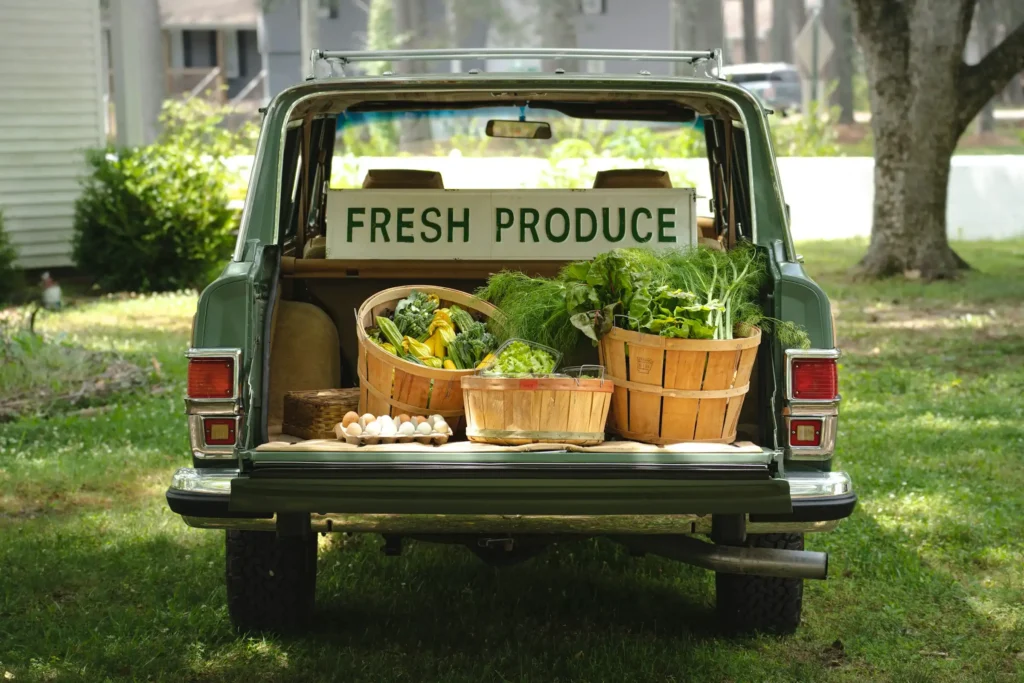
What if organic food isn’t as healthy or ethical as it seems? What if you’re spending extra money on products that aren’t much different from conventional ones? And what if the organic farming industry is actually harming small farmers and the environment? This is the hidden side of the organic food system that few people talk about.
Organic Food Truth and Industry Fraud
The idea behind organic farming was noble — produce food without synthetic chemicals, protect soil health, and promote sustainability. But as the industry ballooned into a $231 billion global market, corporate influence and loopholes have undermined those ideals.
Believe it or not, some farmers are selling conventional crops as organic ones. In South Dakota, Kent Anderson made $71 million selling fake organic grain. Another farmer from Minnesota, James Wolf, pocketed $46 million doing the same thing. And Randy Constant from Missouri sold tens of millions of dollars worth of conventional grain labeled as organic between 2010 and 2017.
Even more concerning, only 2% of imported organic crops are inspected — meaning 98% go unchecked. This opens the door to widespread fraud, leaving consumers none the wiser.
Organic Food Truth About Animal Products
That “organic” egg you had for breakfast might not be what you think. There’s a 90% chance it came from an industrial-scale operation — an organic CAFO, or concentrated animal feeding operation. Most organic chicken, pork, and dairy products are raised in near-total confinement, far from the idealistic farm image consumers imagine.
In 2019, just nine corporate organic dairies in Texas produced more milk than all 530 family-owned organic farms in Wisconsin combined. By 2021, that number jumped to 13 corporate dairies producing almost three times more.
Many of these operations use feed that’s only “technically” organic, including grains grown overseas under questionable standards. Some organic milk even contains omega-3 oil derived from algae fed with corn syrup — a loophole that raises questions about what really qualifies as organic.
Big Agriculture and the Organic Farming Industry
The organic farming industry has shifted from small-scale sustainability to big business. In 2023, the market was valued at $231 billion and is projected to double by 2030. Developing countries are flooding the U.S. market with cheap organic products that often fail to meet U.S. standards.
The USDA’s group certification system for international farms allows only about 2% of those farms to be inspected each year. This has driven many U.S. farmers out of business since imported products can be produced and sold at much lower prices.
For example, Oregon hazelnut growers can’t compete with cheaper imports from Turkey, where farms are barely inspected but still labeled as organic.
The Problem with Certification and Conflicts of Interest
The certification system itself is flawed. Farmers can hire their own inspectors, creating a massive conflict of interest. It’s like grading your own test.
There are nearly 80 different certification agents, many tied to lobbying organizations like the Organic Trade Association, which represents corporate agribusiness interests. This cozy relationship blurs the line between genuine organic farming and marketing strategy.
Hydroponic crops — grown without soil — can even be labeled organic in the U.S., despite the fact that real regenerative agriculture is based on improving soil health. The European Union, Japan, and Canada ban hydroponics from organic certification, but the U.S. allows it, further diluting the integrity of the label.
Soil Health and Sustainability Concerns
Large-scale organic farming often relies on intensive tillage to control weeds since synthetic herbicides are banned. While effective in the short term, this practice disrupts soil structure, causes erosion, and reduces organic matter — ultimately harming soil fertility and microbial life.
True regenerative agriculture avoids these issues by using cover crops, crop rotation, and minimal tilling to enhance biodiversity and soil quality. These are the real sustainable practices that restore the land, unlike large-scale monoculture “organic” farms.
Chemicals and Additives in Organic Food
Here’s something most people don’t know — organic produce can legally be coated with Apeel, a synthetic edible coating designed to extend shelf life. This coating is made from monoglycerides and diglycerides derived from grape seed oil, which is extremely high in inflammatory omega-6 fats.
There are also concerns about heavy metal contamination and solvent residues in Apeel coatings, raising further doubts about the purity of certified organic foods.
The Real Meaning of Organic Food
Not every organic farm is part of this problem. Many small farms uphold the true standards of organic production. But the label alone is no longer a guarantee of quality. Some of the best farms exceed organic standards without being officially certified — because certification costs can be prohibitively expensive for small producers.
Instead of relying solely on labels, consumers should get to know where their food comes from. Visit local farms, join food co-ops, or buy from regenerative farming collectives that prioritize soil and animal health over bureaucracy.
A Better Alternative to the Organic Food System
The best solution is transparency. Real farms with regenerative practices go beyond the USDA’s minimal organic requirements. They rotate animals on pasture, avoid chemicals, and protect the soil microbiome — the living network beneath our feet that sustains nutrient-rich crops.
Building direct relationships with farmers ensures that your food truly supports your health and the planet. As the organic food truth becomes clearer, the path forward is about supporting those who work with, not against, nature.
For verified insights into food standards and nutrition, visit Harvard School of Public Health’s Nutrition Source.